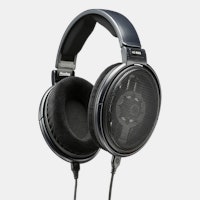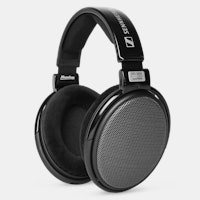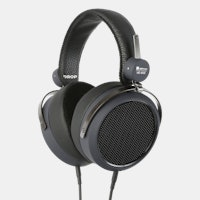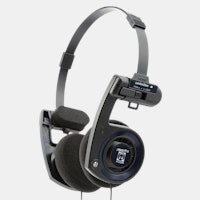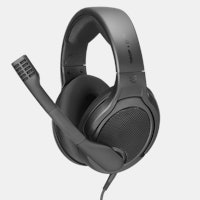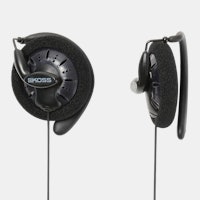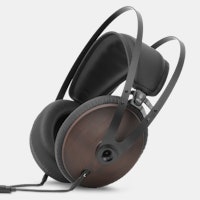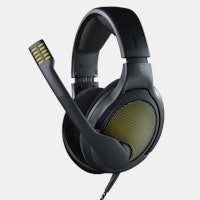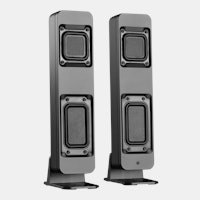Click to view our Accessibility Statement or contact us with accessibility-related questions




















Showing 1 of 46 conversations about:

BLON BossHifi B8 Wooden Headphones

ralphgonz
50
Dec 28, 2018
Just out of curiosity what is the point of all these wood-earcup headphones? Natural hardwoods have resonances that are difficult to control, compared with synthetic materials or engineered wood. So at best wood earcups would have no positive impact on the sound and at worst add colorations. I guess it's all about looks?

jaydunndiddit
3262
Dec 28, 2018
ralphgonzIt's all about dampening and how that manufacturer uses that wood to create a unique sound. Fostex, Denon, ZMF, Audeze, Audioquest, etc., all use different woods and methods to craft the sound as they want. Not to mention how the cups are cut and shaped also plays a huge part on the sound before we get to their density. There isn't a right answer to which is best and goes back to the tube vs solid state amplifier argument. Just different flavors for different tastes.
This is a good, brief overview from ZMF who uses the wildest array of woods that I have ever seen from any manufacturer: http://www.zmfheadphones.com/wood/ and https://www.wood-database.com/wood-articles/hardwood-anatomy/.

ralphgonz
50
Dec 28, 2018
jaydunndidditSo you're saying it's for people who don't care to hear the pure recording in its original form, but who want to add resonances particular to the type of wood.
One problem I see with this is that resonances are uncorrelated between the L and R earcups. So for example say you have a recording of a violin positioned at center-stage. It seems that you would like your headphones to add a new wooden resonance to the violin sound. But if your earcups add resonances these will be uncorrelated (due to differences in wood density distribution in the L and R earcups) and will fail to convince your ears that the resonance is coming from the violin. Your ears will instead hear a violin in the center, a separate wooden resonance far left, and another separate wooden resonance far right. Add more instrumentation and your stereo image will suffer.
That said, these resonances may be much lower in level than ZMF would have you believe, so may have only minor detrimental effects.

jaydunndiddit
3262
Dec 28, 2018
ralphgonzWell, I'm glad you're the final word on what constitutes as "pure." The industry can't even agree on what is truly considered "neutral." Hearing is subjective, hence my statement about flavors. If you have an issue with wood and resonances, then I am going to assume you hate tubes, and vinyl, and R2R dacs due to how they tend to "color" the sound?
You also seem to be misguided and are focusing solely on the resonance of the wood. No matter the material of the enclosure and the driver or dampening scheme, there will be resonance of some sort. That's why CSD and spectrum plots are so important. We also have measurements that show driver matching. What makes it also special is the amount of time it takes to tune wooden cups properly as you have to know each species to be able to use their unique individual qualities. The cutting and shaping plays alongside the density and porous nature of each wood, controlling resonance depending on these factors as well as the driver type and whether they're open or closed. Hell, you can even get low-frequency resonance from an "undamped" bounce from an ear-pad. And it's not as if plastic and metal enclosures don't impart their own characteristics on sounds as well. The same for a biodyna driver compared to a beryllium driver.
What you have presented is purely speculative and goes against the various measurements we have at our disposal. And sadly, it's not as simplistic as you seem to think it is or are making it out to be.

ralphgonz
50
Dec 29, 2018
jaydunndidditAh, you are not an unbiased party, now I understand.

jaydunndiddit
3262
Dec 29, 2018
ralphgonzAnd you're ignorant about the topic of this discussion and have provided nothing of value. But, I guess that should be expected from your previous replies.

ralphgonz
50
Dec 29, 2018
jaydunndidditI think that we have different philosophies of music reproduction. Let's keep things from being mean spirited.

jaydunndiddit
3262
Dec 29, 2018
ralphgonzIt has nothing to do about music reproduction. You made some baseless claims about resonance and how it colors the sound. Then called me biased, while providing no proof and speculating wildly about the matter you inquired about initially.
You quite literally ignored every valid point I've brought to this discussion. Again, you have not provided anything of value in the query that you yourself raised. There's nothing wrong with being ignorant about a new topic, but you're being obstinate for no reason.

ralphgonz
50
Dec 30, 2018
jaydunndidditThese are not baseless claims. They are well known facts in the loudspeaker design community about how wooden enclosures can collapse the stereo image in the absence of treatment to prevent uncontrolled resonances. I believe that these concepts apply to wooden headphone enclosures as well.
The ZMF link you provided indicates that colorations due to uncontrolled resonances are a design decision. I'm willing to chalk that up to a difference in music reproduction philosophy.
As far as you being biased, I may owe you an apology on that one. When I read your response ("We also have measurements that show driver matching") I took the term "we" to mean that you represented a manufacturer. If this is not the case then I'm sorry about that conclusion, and I can see where my comment may have offended you.

jaydunndiddit
3262
Dec 30, 2018
ralphgonzRight. We're not discussing loudspeakers here, but headphones. Technically, I could also lump in IEMs as well since they will have more in common with headphone tuning (vs loudspeaker) and their housings can also be made of various types of wood. And this is just one part of the equation which is what I'm trying to get you to understand. What you know about loudspeakers is not going to apply here.
With headphones, as I stated, even if we were to take a wooden enclosure out of the equation completely, we have so many other factors to worry about when it comes to resonance. The earpads shape and material (pad bounce causes resonance), the headband (a poorly damped headband can transmit resonance), dampening scheme (a huge effect on resonance), driver type and material (Beryllium, Biodyna, Alum-Mag or Dynamic vs Planar vs Electrostat), and whether that headphone or IEM is open or closed. And unlike loudspeakers, headphones and IEMs come in a larger variety of housing configurations and some can have sculpted/tuned chambers inside of that (Campfire Audio uses something called T.E.A.C.).
Now, the above is a lot to consider for any product in hopes of controlling unwanted resonances irrespective of the enclosure being made of wood. And like wood, other housing materials have their own unique density (aluminum, stainless steel, ceramic, ABS, etc). And due to the very high density of certain woods (Ebony is my favorite) they have a natural ability to dampen better than almost any other material. This is all dependent on how the chamber is cut and shaped as well if it needs to be vented or ported and whether that headphone is going to be open or closed.
Like I stated prior, you seem to keep trying to make this simpler than it really is. Here, another user that has one of the wooden headphone MD sells was kind enough to break their's down while swapping wood cups: https://www.massdrop.com/buy/e-mu-teak-headphones/talk/621451. There, you can see how the two woods are cut differently. And this is just how that manufacturer likes to do theirs. And if you're really wanting to take it up a notch, you would look at something like the Lawton cups: https://www.lawtonaudio.com/tonewheel.html.
And, just so I am thorough, these resonance issue you speak up still exist in headphones that are made purely out of plastic and metal just like the revered HD 800 s: https://www.innerfidelity.com/content/sennheiser-hd-800-s-tweaked-and-delightfuland-french-diy-response-measurements. And despite its VERY fancy absorber technology and it still cannot escape from some unwanted resonance.
And no offense taken. I am just another avid, passionate hobbyist at the end of the day. Your query got my attention, is all. I meant "we" as the community at large. There are a lot of great folks out there taking measurements of all our gear (and loudspeakers) so we can objectively view them under a microscope alongside our subjective listening experience. If anything, I urge you to get some ear time with these types of headphones and make up your own mind. That's where the fun is in this hobby.

JoeBi
Jan 24, 2019
ralphgonzI don't think these are wood. They look, feel, and click like hard PLASTIC.

factsvsfeelings
17
Aug 22, 2019
JoeBiThe outer material is indeed wood. Your thoughts are irrelevant it is or it isnt. And this most certinally is.

JoeBi
Aug 29, 2019
factsvsfeelingsIt seems like a composite -- more plastic than wood, like shaved wood molded and glued to plastic, for decoration. They look fine and are sturdy, so poor design for normal humans head is the real hurdle with these. Apparently there are 3rd party pads at various prices that help give these the fit (for some heads at least) that these worth the price.
(Edited)
PRODUCTS YOU MAY LIKE
Trending Posts in Audiophile

harrykane01
World Of Shanik
The World of Shanik, known for its fusion of culinary excellence and elegant design, now offers a diverse range of products to enhance your lifestyle. From the exquisite turntable cheese board, perfect for entertaining guests with style, to the nightstand organizer wood, keeping your essentials neatly arranged, to the custom tequila shot glasses that add a personal touch to any gathering, Shanik continues to innovate in both form and function. Since its inception as a celebration of good food, good people, and sophisticated design, Shanik has evolved into a trusted destination for those who appreciate quality craftsmanship and tasteful living.
Apr 25, 2024

robbertwilson
Shop Premium Women Golf Shirts at ApparelnBags
Be the trendsetter on the golf course with our stylish collection of custom polo shirts for women. Whether you're swinging your way to victory or simply want to rock that sporty chic look, our polo shirts for women are here to make you stand out. Moreover, we understand that style and quality go hand in hand. That's why, from golf shirts for women to long sleeve polo shirts for women , we handpick the best products to ensure you experience comfort and durability. Also, our women polo shirts offer the perfect blend of style and functionality, so you can focus on your game without compromising style. So, grab your favorite polos today. Remember, it's not just a game; it's a lifestyle, and our polos will help you ace both!
Apr 25, 2024

SsButerbal
Ringing in PC38X's
I recently got this headset, and wow is it good. My only issue is when certain people talk on discord, I can hear a really high pitched ringing. I fiddled with a bunch of settings, computer audio and discord, and nothing seems to solve the issue. It is primarily if not all in my right ear only. Is there something wrong with my headset, or was that ringing always there I can just hear it cause the headset is THAT good? I haven't had any issues with any other application, though I have yet to test if I can hear the ringing on a different version of discord, say on my xbox instead of my pc. Only other issue I've had is occasional static, but I can't tell if it's from the headset or the show/game/etc.
Apr 24, 2024
itsamepe
Sennheiser PC37X randomly goes bad after disconnecting the cable ?
Greetings, Yesterday I was using my headset like normal with my macbook, just listening to music and on a call with people like usual, and the headset was perfectly fine. The stock wire that came with the headset is extremely long and yesterday it annoyed me very much that it kept getting tangled with itself, so I decided to see if the cable is replaceable. I pulled out the cable from the headset and saw the adapter, and looked online for a replacement. Upon plugging it back in, the audio sounded extremely muffled and washed out. Im not sure what I did wrong to make it mess up like that as I've always taken good care of it, ive had it for about 2 years and its always just been chilling on my desk, but anywho I thought the cable just went bad and ordered a replacement. The replacement came, and the issue is still persistant, so I am not sure what the issue is I've tried multiple different headsets and the issue is not with the port, and I also tried it with my windows laptop and...
Apr 23, 2024

MrChiSox
Big changes coming to my tiny little music room, I've recently purchased a new stack. Currently figuring out where to locate it all and ordering up the necessary cables, it won't be too long before I'm up and running. I am now the proud owner of a brand new stack. It's a European brand called Earmen. Amp, DAC, Streamer & Linear Power Supply. It won't be long!
https://www.youtube.com/watch?v=MB15yM4UptQ
Apr 23, 2024

Briankan
Recommendation for my next headphone set? I have Koss 95x
Hey all, What would you recommend I get next and why? I have Koss ESP-95x electrostatic massdrop headphones. These are my first and only audiophile set. I love them. I think my only real requirements is $500 or less for the headphones and that they have a little more low end. I don’t need thump but these are really light on lows…but the experience is still awesome. Also any recommendations on an amp? I only have my electrostatic thingy. I am using the Topping D50 DAC. thx!!
Apr 22, 2024

Simthaniel
Rigs
Modded headphones with qudelix at the core
When I received the Qudelix 5K, I had already modified a pair of Superlux HD-681 headphones. I previously soldered my own balanced connections to the drivers, providing multiple ways to connect and...
Apr 14, 2024
